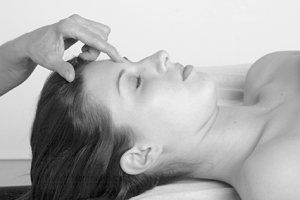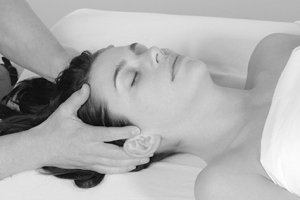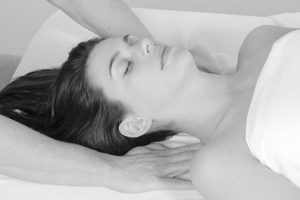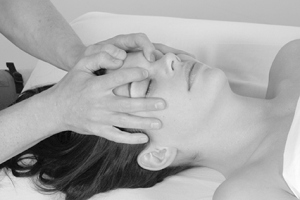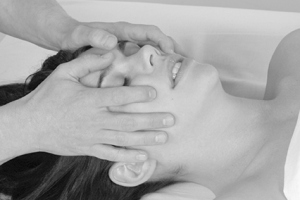Coming up on my 18th year of being a skin therapist, I reflect back on all my tools that I use in my arson for anti-aging, relaxation, result orientation skin care and acne problems. One of the most tried and true treatments that I incorporate with every facial that I perform are pressure points. I first learned about pressure points at the Aveda Institute during my education for getting my aesthetics license. I remember sitting with my class outside (being that it was Minneapolis we didn’t get outside much). I had a fellow students head in my lap while she laid in the grass and I learned the technique. 90% of my new clients say, “I have never had a facial like that before!” I believe I stand out because I give them a pressure point massage. I want you as a therapist to have a technique that stands out from the rest. For me, I stand out because of my pressure point massage and the use of high frequency, I’ll explain the importance of High Frequency in a future blog and featured article for Les Nouvelles Esthetique and Spa magazine.
You can incorporate pressure points at any time, with any facial. For example, if I cannot perform a massage due to red and irritated skin (roseacea, acne or post exfoliation treatment), I simply perform the main 15 points on the face. This relaxes the client, their muscles, increases blood flow, all the while not rubbing their face and increasing the irritation. I like to perform pressure points while they have a hydrating mask on; I perform right through the mask. You can also perform pressure points during the facial massage. I believe as Aestheticians, we are all our own chefs in the kitchen. We have our own flow, use different ingredients and liken our facial to our menu. There are no right or wrongs to when we perform pressure points on our clients.
There are fifteen points on the face that represent areas and systems within the body.
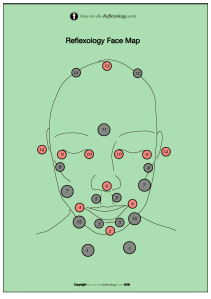
Facial Pressure Point Massage Chart
There are several types of pressure points – each is applied differently and each creates a different effect. Most pressure points are located on pathways on the nervous system. Some pressure points produce pain when struck, pressed, or rubbed, depending on the point itself. These points are also referred to as nerve centers. In acupressure, you compress key energy points on the skin’s surface with your fingers to stimulate your body’s natural healing abilities. Different kinds of pressure on the pressure points achieves different results, but the most common type of acupressure application is firm, prolonged pressure, from 1 to 3 minutes. You locate a point; sink in gradually with your finger, thumb, heel, or side of your hand; and hold it for at least 1 minute to calm and relax the nervous system. The depth to which you sink into a point should be enough to cause your partner to perceive it as a “good hurt”—a bit tender but so it feels as if it’s doing some good. Also remember to never break contact, rotate back and forth with your hands.
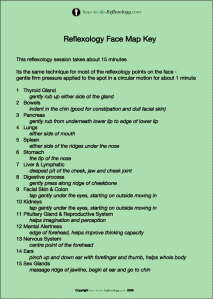
It’s important that both you and your partner breathe fully and deeply during the application of acupressure. Your partner’s deep breathing allows the points to release pain and tension and promote the flow of healing energy throughout the body. Your partner will feel her ability to regulate the steady amount of pressure you’re exerting with your finger, as the pressure increases on her inhalations and decreases with her exhalations, regardless of where on the body you are pressing. Your deep and steady breath will not only help keep you focused and centered on what you’re doing, but will also remind your partner to maintain a steady breathing pattern.
- Never apply any finger pressure in a jarring or abrupt way.
- Never loose contact
- Remeber to breathe with your clients
- Avoid areas of broken skin or recent scars.
I find the following pressure points to be the best during a facial pressure point massage:
The Third Eye point is in the indentation at the bridge of the nose between the eyebrows. This is a useful point for relieving anxiety, stress, chronic fatigue, and headaches. I like to start with this pressure point.
The Gallbladder 2 is a fingertip-size point where the top of the ear joins side of the face and is useful for alleviating headache pain, especially vascular headaches and migraines.
The Shoulder Well point is on the highest part of the shoulder, slightly closer to the neck than midway between the base of the neck and the outer point of the shoulder. It relieves anxiety, fatigue, shoulder tension, and headaches.
The Drilling Bamboo points are in the indentation of the inner eye socket just below the middle point of the eyebrows. They relieve sinus pain and congestion and eyestrain.
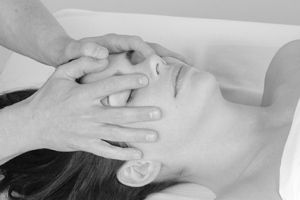
The Welcoming Perfume points are just to the sides of the nostrils, by the nasal crease. These points are good for sinus congestion and pain.
The Facial Beauty points lie directly below the pupils of the eyes as your partner is looking straight ahead, just under the edge of the cheekbone. These points help sinus pain and congestion, as well as eye fatigue.
Water is important because an increase in blood circulation means the body will get rid of waste quicker, it will make your reflexology treatment so much more successful if you follow these last two steps.1 Get the person receiving face reflexology a big glass of water. 2 Tell them to take it easy for the rest of the day and keep up the water
Relaxation is important. It allows people to stop and take time out from the stresses and obligations of life, relaxing is the same as hitting a reset button and these buttons are pressure points! And often can make us more efficient and happy just for having done it. Helping someone relax is helping them stay healthy. I encourage you to try, practice and stand out!
Look for this article in Les Nouvelles Esthetique & Spa magazine, Feb 2013 www.LNEONLINE.com


